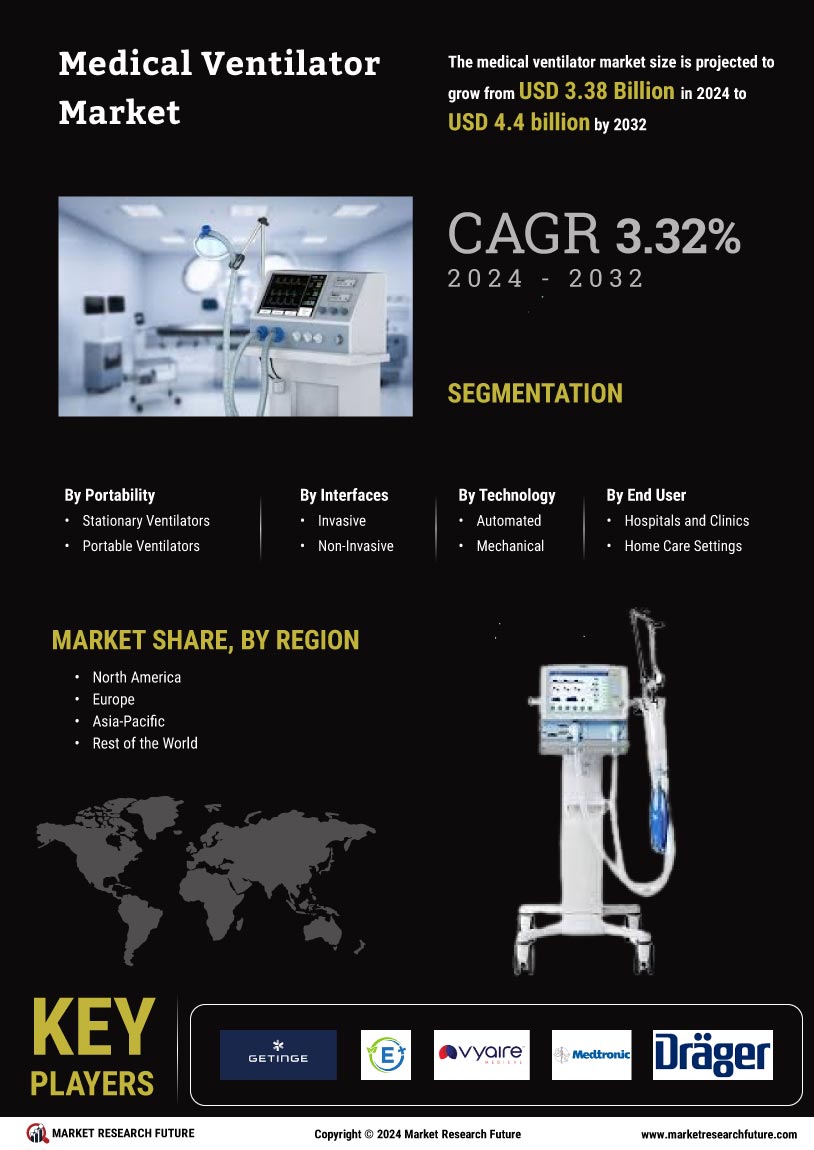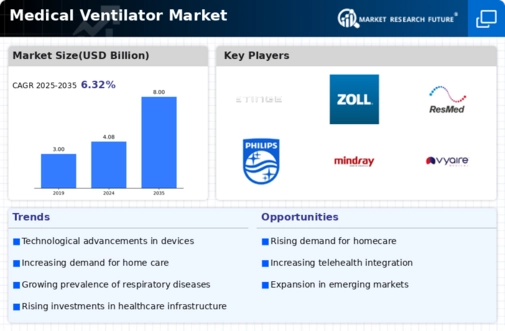Rising Awareness of Respiratory Health
The growing awareness of respiratory health among the general population is a notable driver of the Medical Ventilator Market. Educational campaigns and public health initiatives are fostering a better understanding of respiratory conditions and the importance of timely intervention. As individuals become more informed about the risks associated with respiratory diseases, there is a corresponding increase in demand for medical interventions, including ventilatory support. This heightened awareness is prompting healthcare providers to prioritize respiratory care, leading to an uptick in the utilization of ventilators. Additionally, as patients seek more comprehensive care options, the Medical Ventilator Market is likely to expand, reflecting the increasing recognition of the need for effective respiratory management.
Growing Focus on Emergency Preparedness
The emphasis on emergency preparedness is a significant driver for the Medical Ventilator Market. In light of various health crises, healthcare systems are prioritizing the acquisition of ventilatory support systems to ensure readiness for potential surges in patient demand. This focus is particularly evident in emergency departments and intensive care units, where ventilators are essential for managing critical patients. Data indicates that many healthcare facilities are investing in expanding their ventilator inventories to enhance their capacity to respond to emergencies. This trend is likely to continue, as healthcare providers recognize the importance of being equipped to handle unforeseen circumstances. Consequently, the Medical Ventilator Market is poised for growth as institutions strive to bolster their emergency preparedness capabilities.
Technological Innovations in Ventilation
Technological advancements play a crucial role in shaping the Medical Ventilator Market. Innovations such as non-invasive ventilation, portable ventilators, and smart ventilatory systems are transforming patient care. These technologies enhance the efficiency and effectiveness of respiratory support, allowing for better patient monitoring and management. For instance, the integration of artificial intelligence in ventilators enables real-time data analysis, improving clinical decision-making. The market is witnessing a shift towards more user-friendly and adaptable devices, which cater to diverse patient needs. As healthcare facilities increasingly adopt these advanced technologies, the Medical Ventilator Market is expected to experience significant growth, driven by the demand for improved patient outcomes and operational efficiency.
Rising Prevalence of Respiratory Diseases
The increasing incidence of respiratory diseases, such as chronic obstructive pulmonary disease (COPD) and asthma, is a primary driver of the Medical Ventilator Market. According to recent data, respiratory diseases account for a substantial portion of global morbidity and mortality. This trend necessitates the availability of advanced ventilatory support systems to manage these conditions effectively. As healthcare providers seek to enhance patient outcomes, the demand for sophisticated ventilators is likely to rise. Furthermore, the aging population, which is more susceptible to respiratory ailments, contributes to this growing need. The Medical Ventilator Market is thus positioned to expand as healthcare systems adapt to these challenges, ensuring that adequate resources are allocated to respiratory care.
Increased Investment in Healthcare Infrastructure
Investment in healthcare infrastructure is a pivotal factor influencing the Medical Ventilator Market. Governments and private entities are channeling resources into enhancing healthcare facilities, particularly in developing regions. This investment often includes the procurement of advanced medical equipment, including ventilators, to improve patient care. As healthcare systems expand and modernize, the demand for reliable and efficient ventilatory support systems is expected to rise. Furthermore, initiatives aimed at strengthening healthcare access in underserved areas are likely to drive the market, as these regions require adequate respiratory care solutions. The Medical Ventilator Market stands to benefit from this trend, as increased funding translates into greater availability of essential medical devices.

















Leave a Comment